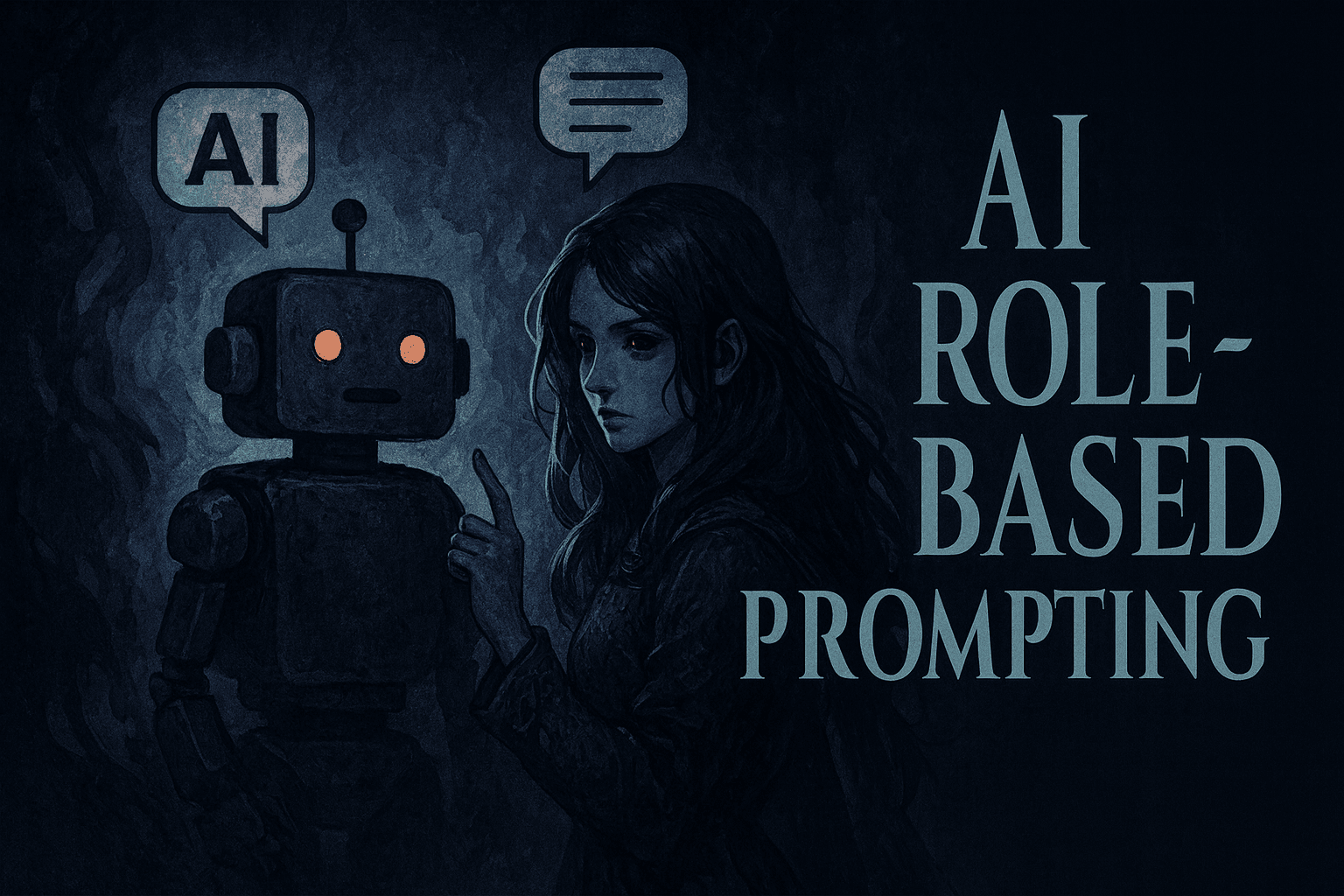LLM & ChatGPT Text Prompts Versus JSON Prompts

Prompting has become one of the most important skills for many businesses all over the world. It’s not going away.
As a business, we use AI and GPTs heavily for productivity flow, content outlines, and even content creation. There are times we use text prompt, and there are times we use JSON prompts.
In particular, we are finding that using JSON in the OptizenAI app for Shopify, for ecommerce SEO title, descriptions, and content, seems to provide less ambiguous and stricter output. There is less hallucination, and the LLM operate between the rails, more so than simple text prompting. This makes sense, particularly for text prompts that become overly large.
But to get a more detailed view, we should work through the pros and cons of each what are the differences.
Overview Of JSON & Text Prompts
AI text prompts and JSON AI prompts serve different purposes in large language models (LLMs). AI text prompts are used for natural language processing (NLP) tasks, while JSON AI prompts are structured data formats suitable for complex data manipulation and machine learning models. Understanding their differences, benefits, and applications can help you choose the right approach for your specific needs.
What are AI Text Prompts?
AI text prompts are plain text inputs provided to an LLM to generate responses. These prompts are often used in chatbots, content generation, and other NLP tasks. For example, a text prompt might be a question like “What is the weather today?” The AI processes the text and generates a relevant answer.
Applications of AI Text Prompts
- Chatbots: Enhancing user interactions by generating human-like responses.
- Content Creation: Automating the creation of articles, stories, or reports.
- Language Translation: Translating text from one language to another.
- Sentiment Analysis: Understanding and categorizing opinions expressed in text.
What are JSON AI Prompts?
JSON AI prompts are structured data inputs used to provide detailed and organized information to an AI model. JSON (JavaScript Object Notation) is a lightweight data-interchange format that is easy for humans to read and write, and easy for machines to parse and generate. For instance, a JSON AI prompt might look like this:
jsonCopy code{
"query": "weather",
"location": "New York",
"date": "2024-07-24"
}Applications of JSON AI Prompts
- Data Integration: Combining and analyzing data from multiple sources.
- Configuration Management: Specifying settings and parameters for AI models.
- API Interactions: Facilitating communication between different software systems.
- Structured Data Analysis: Managing and processing large datasets.

Historical Background of AI Prompts
Evolution of AI Text Prompts
AI text prompts have been used since the early days of NLP. Initially, they were simple commands or questions, but as AI technology evolved, so did the complexity and variety of text prompts. The development of sophisticated LLMs like GPT-3 and GPT-4 has significantly expanded the capabilities and applications of text prompts.
Evolution of JSON AI Prompts
JSON, introduced in the early 2000s, quickly became a popular format for data exchange due to its simplicity and readability. Its adoption in AI has grown as models require more complex and structured input data. JSON prompts are now essential in configuring and fine-tuning AI models, enabling detailed and precise instructions.
Technical Aspects of AI Text Prompts
Data Processing
Text prompts are processed through tokenization, where the input text is split into smaller units (tokens) that the model can understand. The model then generates a response based on these tokens.
Implementation
Implementing text prompts involves providing clear and concise instructions to the model. The quality of the output depends on the clarity and context provided by the prompt.
Challenges and Solutions
- Ambiguity: Text prompts can be interpreted in multiple ways. Solution: Provide context and specify details in the prompt.
- Length Limitations: Long prompts may exceed model limits. Solution: Break down complex queries into smaller, manageable prompts.
Technical Aspects of JSON AI Prompts
Data Processing
JSON prompts are parsed into key-value pairs, allowing the model to understand and utilize structured data. This enables more precise control over the input parameters.
Implementation
Implementing JSON prompts requires defining a clear structure and format. Each element in the JSON object must be accurately specified to ensure proper processing by the model.
Challenges and Solutions
- Complexity: Creating detailed JSON prompts can be challenging. Solution: Use JSON schemas and templates to standardize input.
- Validation: Ensuring the JSON format is correct. Solution: Implement validation tools to check JSON syntax before submission.
Key Differences Between Text and JSON Prompts
Text AI prompts are unstructured and rely on natural language, making them intuitive but sometimes ambiguous. In contrast, JSON AI prompts are structured, providing clear and precise input, which reduces ambiguity but requires more detailed setup. Both can leverage modular prompting.
Advantages of AI Text Prompts
- Simplicity: Easy to create and use.
- Flexibility: Can handle a wide range of queries.
- Natural Interaction: Suitable for conversational AI applications.
Advantages of JSON AI Prompts
- Precision: Clearly defined structure eliminates ambiguity.
- Control: Allows for detailed and specific instructions.
- Scalability: Efficient for handling large and complex datasets.
Use Cases for AI Text Prompts
Chatbots
Text prompts enable chatbots to generate human-like responses, enhancing user engagement and satisfaction.
Content Creation
Automating the generation of articles, blog posts, and other content through AI text prompts saves time and resources.
Language Translation
AI text prompts facilitate the translation of text across different languages, improving communication and understanding.
Sentiment Analysis
Text prompts help analyze opinions and emotions expressed in text, valuable for market research and customer feedback.

Use Cases for JSON AI Prompts
Data Integration
JSON prompts enable the seamless combination of data from various sources, providing a unified view for analysis.
Configuration Management
Specifying detailed settings and parameters for AI models through JSON prompts ensures accurate and consistent configurations.
API Interactions
Facilitating communication between different software systems, JSON prompts enable efficient data exchange and integration.
Structured Data Analysis
Managing and processing large datasets with JSON prompts allows for precise and organized analysis, crucial for data-driven decision-making.
Integration of AI Prompts in Modern AI Systems
System Architecture
AI systems integrate prompts through APIs and interfaces that accept text or JSON inputs, process them, and generate outputs.
Integration Challenges
- Compatibility: Ensuring prompts are compatible with different systems and models.
- Scalability: Handling large volumes of prompts efficiently.
Best Practices
- Standardization: Use standard formats and structures for prompts.
- Validation: Implement validation tools to ensure prompt accuracy.
- Documentation: Provide clear documentation for prompt usage and guidelines.
Pros and Cons of Each Format
Pros of AI Text Prompts
- Ease of Use: Simple and intuitive.
- Versatility: Can handle a variety of queries and tasks.
Cons of AI Text Prompts
- Ambiguity: Potential for misinterpretation.
- Scalability Issues: May struggle with large datasets or complex queries.
Pros of JSON AI Prompts
- Precision: Clear and structured format.
- Control: Detailed and specific input.
Cons of JSON AI Prompts
- Complexity: Requires more setup and detailed knowledge.
- Validation Needs: Ensuring correct format and structure can be challenging.
Final Points
AI text prompts and JSON AI prompts each have their strengths and weaknesses. AI text prompts are ideal for NLP tasks, offering simplicity and flexibility. JSON AI prompts excel in structured data applications, providing precision and control.
Where To Next
The future of AI prompts will likely see further integration of natural language and structured data formats, enabling more sophisticated and versatile AI models. Advances in AI technology will continue to enhance the capabilities and applications of both text and JSON prompts.
Recommendations
For conversational AI and general NLP tasks, AI text prompts are the preferred choice due to their simplicity and natural interaction. For data integration, configuration management, and structured data analysis, JSON AI prompts provide the necessary precision and control.
However as mentioned above, we are also finding better quality output, by using JSON prompts for content creation
By understanding the differences, pros, and cons of AI text prompts and JSON AI prompts, you can make informed decisions on which format best suits your specific needs and applications.
Ready to Boost Your Shopify Store?
Increase revenue with video upsells and dominate search rankings with AI-powered SEO.
Related Articles

Using Role Based Prompting For Better AI Answers
Role prompting assigns a specific persona to an AI model. This technique instructs the AI to adopt a certain expertise, like a doctor or a historian. The AI then generates responses from that character’s perspective. This process tailors the output, making it more specific, contextual, and useful for the user. Okay so, role prompting. It’s […]

What Is Few-Shot Prompting: Making AI Actually Do What You Want
Few-shot prompting is a technique that guides large language models. It provides the model with several examples, or “shots,” directly within the prompt. These examples demonstrate a specific task and the desired output format. The model learns from these shots to generate a more accurate and contextually relevant response. You’ve probably heard the term “few-shot […]

Building Scalable AI Systems with Modular Prompting
Modular prompting is a technique that structures prompts into distinct segments or modules, each targeting a specific task or behavior. It improves consistency, reusability, and control in large language model outputs by isolating context, instructions, examples, or goals into separate blocks. If you’ve ever felt the frustration of getting wildly inconsistent results from a large […]